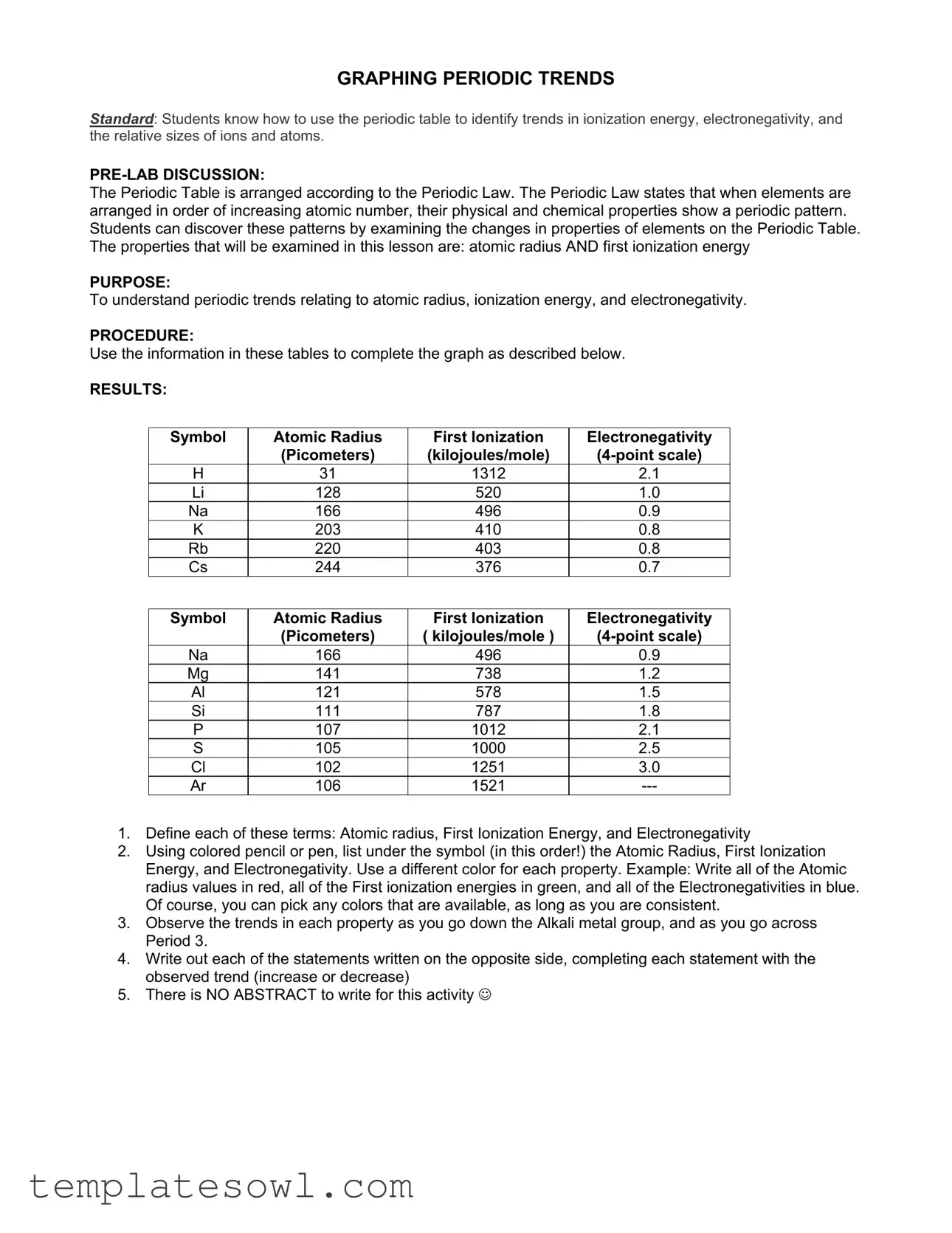What is the purpose of the Graphing Periodic Trends form?
The purpose of the Graphing Periodic Trends form is to help students understand the relationships between atomic radius, first ionization energy, and electronegativity as they examine the periodic table. By analyzing these properties, students can identify trends and patterns that are fundamental to chemistry.
What properties are examined in this lesson?
This lesson focuses primarily on atomic radius, first ionization energy, and electronegativity. Each of these properties plays a crucial role in understanding how elements react and bond with one another. By observing these properties, students can gain insights into the behavior of different elements.
How should students color-code the properties on their graphs?
Students are encouraged to use colored pencils or pens to distinguish between the different properties. For example, they might write all atomic radius values in red, first ionization energies in green, and electronegativities in blue. However, any choice of colors works, as long as they remain consistent throughout their graph.
What trends should students observe when going down the Alkali metal group?
As students examine the Alkali metal group, they will notice that the atomic radius tends to increase while both the first ionization energy and electronegativity decrease. These trends highlight the changes in atomic structure and energy required to remove electrons as one moves down the group.
What observations can be made as students move across Period 3?
In Period 3, students will typically observe a trend where atomic radius decreases as they move from left to right. Conversely, both first ionization energy and electronegativity tend to increase in this direction. This behavior reflects the increasing positive charge of the nucleus, pulling the electron cloud closer to it.
Are students required to write an abstract for this activity?
No, students are not required to write an abstract for this activity. The focus is on the graphing and understanding of trends rather than on formal scientific writing. This allows them to concentrate on recognizing and articulating the patterns they discover.
What definitions should students provide in the Graphing Periodic Trends form?
Students should define atomic radius, first ionization energy, and electronegativity. These definitions not only clarify what each term means but also set the stage for deeper discussions about their significance in the context of the periodic table.
What format should students follow when completing the statements related to trends?
Students will fill out statements regarding trends by completing them with their observations. For instance, they might note whether certain properties show an increase or decrease as they analyze specific groups or periods on the periodic table. This exercise reinforces their understanding of trends and enhances their analytical skills.
What is the significance of the Periodic Law in this lesson?
The Periodic Law serves as the foundation for understanding the organization of the periodic table. It states that when elements are ordered by increasing atomic number, their physical and chemical properties reveal periodic patterns. This principle guides students in their exploration of elemental properties and trends as they work through the Graphing Periodic Trends form.

